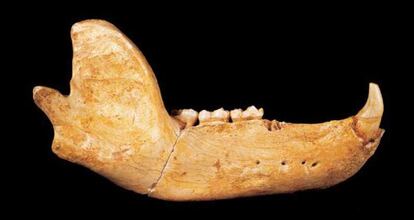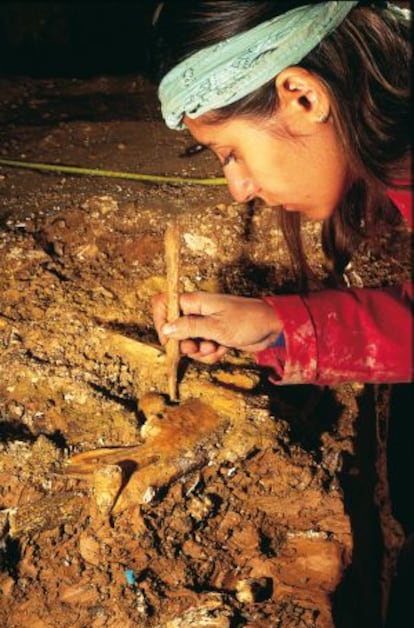Bear genome at Atapuerca paves way for earliest hominid sequencing at site
Team including Spanish researchers samples DNA of animals who lived about 400,000 years ago

An international team that includes Spanish researchers has sequenced the mitochondrial genome (special DNA passed on exclusively by mothers) of bears who lived about 400,000 years ago in Atapuerca, near Burgos in northern Spain. This brings scientists closer to sequencing the entire genome of pre-Neanderthal humans who lived at the same time, and who hold clues about the evolution of our species.
The small mtDNA fragments were found inside samples of bear bones that were mixed in with hominid fossils at Sima de los Huesos (Pit of the Bones) at the Atapuerca site, which contains the world's largest collection of human remains from the Middle Pleistocene. Until now, the oldest samples of DNA recovered in temperate areas - not frozen at high altitudes - were between 100,000 and 120,000 years old.

The breakthrough could have significant implications for human paleontology.
"Let us hope that the methodology that we are presenting here will help recover ancient DNA sequences from other organisms of the Middle Pleistocene. The fossils of Sima de los Huesos are the target of these efforts," write Jesse Dabney and his colleagues in Proceedings of the National Academy of Sciences (PNAS), which this week publishes the entire mitochondrial genome of those early cave inhabitants.
"Yes, of course I am optimistic about the possibility of obtaining DNA from human fossils at the pit; if it is there in the bear bones, it can be there in the human bones, which are contemporary to the latter," says Juan Luis Arsuaga, co-director of the Atapuerca site and one of the authors of the new study.
Tu suscripción se está usando en otro dispositivo
¿Quieres añadir otro usuario a tu suscripción?
Si continúas leyendo en este dispositivo, no se podrá leer en el otro.
FlechaTu suscripción se está usando en otro dispositivo y solo puedes acceder a EL PAÍS desde un dispositivo a la vez.
Si quieres compartir tu cuenta, cambia tu suscripción a la modalidad Premium, así podrás añadir otro usuario. Cada uno accederá con su propia cuenta de email, lo que os permitirá personalizar vuestra experiencia en EL PAÍS.
¿Tienes una suscripción de empresa? Accede aquí para contratar más cuentas.
En el caso de no saber quién está usando tu cuenta, te recomendamos cambiar tu contraseña aquí.
Si decides continuar compartiendo tu cuenta, este mensaje se mostrará en tu dispositivo y en el de la otra persona que está usando tu cuenta de forma indefinida, afectando a tu experiencia de lectura. Puedes consultar aquí los términos y condiciones de la suscripción digital.
Últimas noticias
The complicated life of Francesca Albanese: A rising figure in Italy but barred from every bank by Trump’s sanctions
Half of Scotland is in the hands of 420 property owners
Pinochet’s victims grapple with José Antonio Kast’s rise in Chile
Reinhard Genzel, Nobel laureate in physics: ‘One-minute videos will never give you the truth’
Most viewed
- Pablo Escobar’s hippos: A serious environmental problem, 40 years on
- Why we lost the habit of sleeping in two segments and how that changed our sense of time
- Charles Dubouloz, mountaineering star, retires at 36 with a farewell tour inspired by Walter Bonatti
- Reinhard Genzel, Nobel laureate in physics: ‘One-minute videos will never give you the truth’
- The Florida Keys tourist paradise is besieged by immigration agents: ‘We’ve never seen anything like this’








































